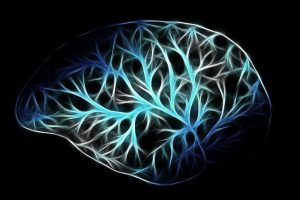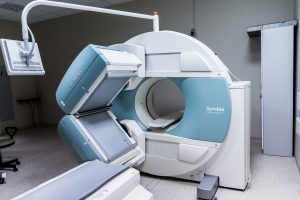Think back to 2014. Do you remember the ice bucket challenge that went viral? In case you need your memory jogged, throughout that year, people were tagged on social media by their friends or family and challenged to dump ice cold water over their heads. To some it was just a challenge, but it began as much more than just a bit of fun. It was originally intended to raise awareness and money for ALS. Amyotrophic lateral sclerosis, or ALS, is a motor neuron disease that affects 30,000 people in the U.S., with 1-3 new cases per 100,000 people every year. But what exactly is ALS? And who is most at risk for developing it?
ALS Explained
ALS, also called Lou Gehrig’s disease, is characterized as a group of progressive neurological diseases that cause dysfunction in the nerves that control muscle movement. The nerve cells in the brain degenerate and eventually die, which stops the communication between the nervous system and the voluntary movements of the body. Once the motor neurons are gone, muscles become weak and then nonfunctional. The disease can be fatal because the nerves that control breathing can die.
Symptoms
Signs of the disease usually appear when a person is in their 50s or 60s, but can appear earlier or later. Early signs of ALS include:
- Slight muscle weakness
- Clumsy hand movements
- Tripping and falling due to muscle weakness
- Difficulty swallowing
- Impaired and/or loss of function of the tongue, mouth, and/or voice box
- Leg cramps during the night
- Uncontrolled twitching of muscles
- Stiffness in the legs
- Coughing
As ALS progresses, symptoms become more widespread, and some muscles become paralyzed, while others are weakened or unaffected. In late-stage ALS, most muscles that affect voluntary movements are paralyzed.
Who Is Affected By ALS?
ALS can affect anyone of any age, gender or race, but studies show that people between the ages of 40 and 70 are most affected.
Unfortunately, the exact underlying cause of ALS is unknown, but researchers have made some speculations as to what could cause it, including a disorganized immune system, a chemical imbalance, or mishandling of proteins by nerve cells. It is thought that the environment can play a role as well. There have been some possible links between ALS and mechanical or electrical trauma, high levels of exercise, high levels of agricultural chemicals and high levels of heavy metals.

There are 2 types of this disease, one of which affects far more people:
- Sporadic ALS, which occurs randomly with no family history, and accounts for 90-95% of cases.
- Familial ALS, which is inherited and runs in the family. It accounts for 5-10% of cases.
Genetic testing can be done if there is a suspected familial cause of ALS; there are other tests that can also be done including:
- Electromyography (EMG), which measures the muscles’ response to triggers.
- Muscle biopsy, which examines muscle tissue under a microscope.
- MRI, so doctors can examine organs and tissues in the brain and spinal cord.
- Blood and urine tests
- Spinal tap
Most people will live for about 3-5 years after they experience their first signs of ALS. The life expectancy of those affected is:
- 20% will live 5 years or more after diagnosis
- 10%, or 1 in 10 people, will live more than 10 years following a diagnosis.
- 5% will live for 20 years
- Survival past 20 years is possible, but rare. Stephen Hawking was diagnosed at age 21, and lived to age 76.
Currently, there is no cure or effective treatment to stop the progression of ALS, which is why the ice bucket challenge took the internet by storm. More research needs to be done to discover effective treatments for those suffering with ALS.

While there is no cure or treatment for ALS, those who receive a diagnosis of this disease will need to schedule clinic visits every 3-4 months to monitor changes. ALS is a complex disease, but with the help of doctors, physical and occupational therapists, counselors, and a nutritional plan, people with the disease can manage the symptoms and slow the progression. All of this can be expensive, so having a good insurance plan will help keep those with ALS from being buried under medical bills.
If you are looking for a comprehensive health insurance plan that will ease the burden of medical bills while you’re dealing with a health condition, EZ can help. Our trained licensed agents work with the top-rated insurance companies in the country, so we can compare all available options for your needs. To get free instant quotes, enter your zip code in the bar above, or to speak with a local agent, call 888-350-1890. No obligation, just free quotes.